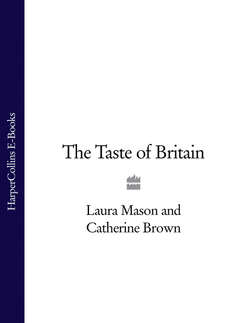Читать книгу The Taste of Britain - Hugh Fearnley-Whittingstall - Страница 79
HISTORY:
ОглавлениеThese cattle, which gain two alternative names, Red Devon or Ruby Red, from their dark, red-brown pelts, are traditional to Exmoor - hence a third, North Devons. Even in the Domesday Book (1086), the density of cattle recorded in north-west Devon was exceptional. This may hint, perhaps, at the emergence of a distinctive breed, although the first known mention of red cattle in the West Country was in correspondence of the late sixteenth century.In the eighteenth century, detailed descriptions of Devon cattle were given by several agriculturists. By this time the breed was improved to produce a stronger animal for heavy draught work. The foundations for these changes were laid by the Quartly family, who had acquired a farm on Exmoor. Comment thereafter stresses both the docility of the cattle and the quality of the beef. The Breed Society was formed in the late nineteenth century.
There is another Devon breed, the South Devon, which is recognized as distinct; it is a dual-purpose cow which provides excellent rich milk and good beef. Although coming from the same original strain, it is a heavier beast than the Ruby Red. It is touched upon in the entry for Channel Island milk, below, p.52.
